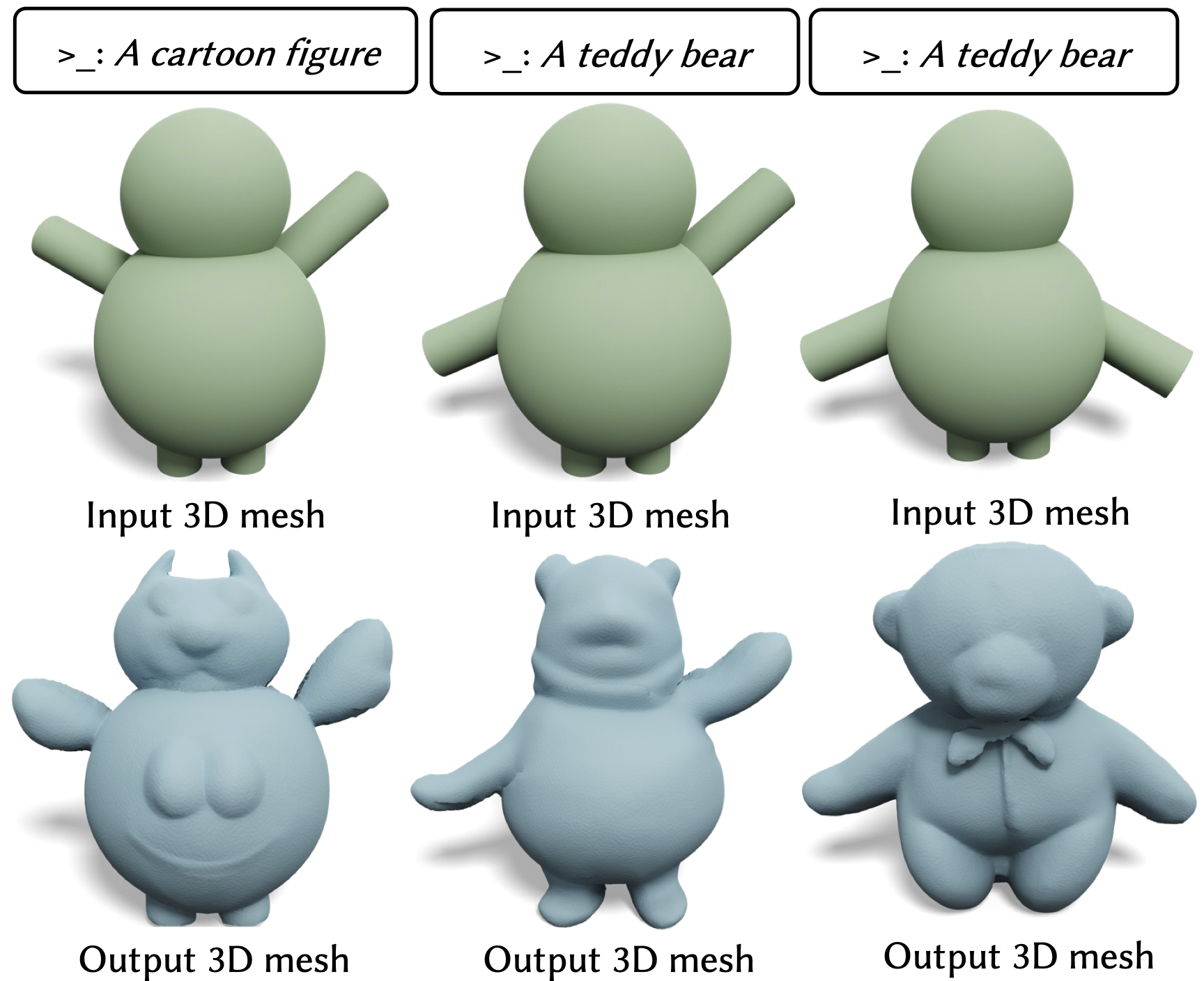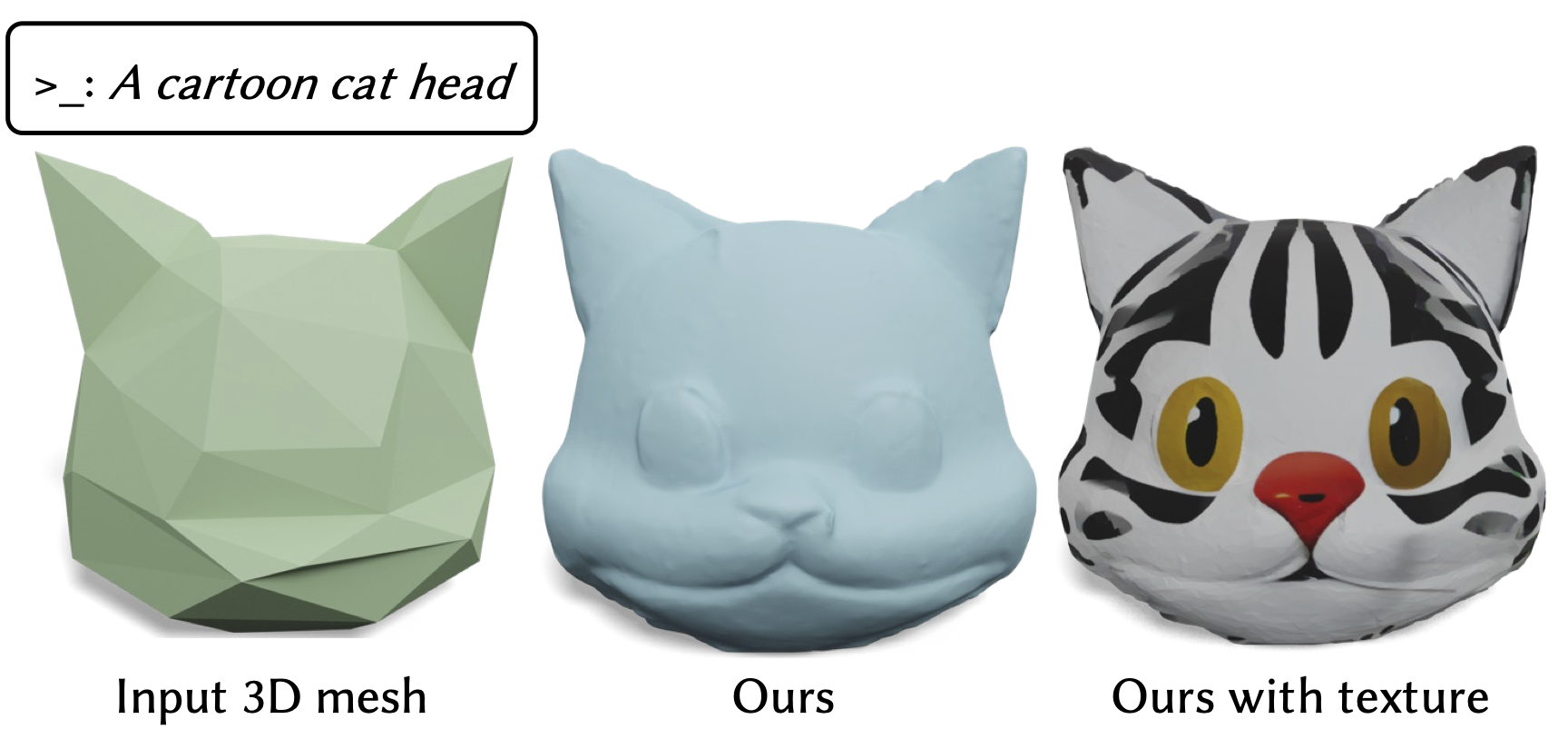We propose a novel technique for adding geometric details to an input coarse 3D mesh guided by a text prompt. Our method is composed of three stages. First, we generate a single-view RGB image conditioned on the input coarse geometry and the input text prompt. This single-view image generation step allows the user to pre-visualize the result and offers stronger conditioning for subsequent multi-view generation. Second, we use our novel multi-view normal generation architecture to jointly generate six different views of the normal images. The joint view generation reduces inconsistencies and leads to sharper details. Third, we optimize our mesh with respect to all views and generate a fine, detailed geometry as output. The resulting method produces an output within seconds and offers explicit user control over the coarse structure, pose, and desired details of the resulting 3D mesh.




